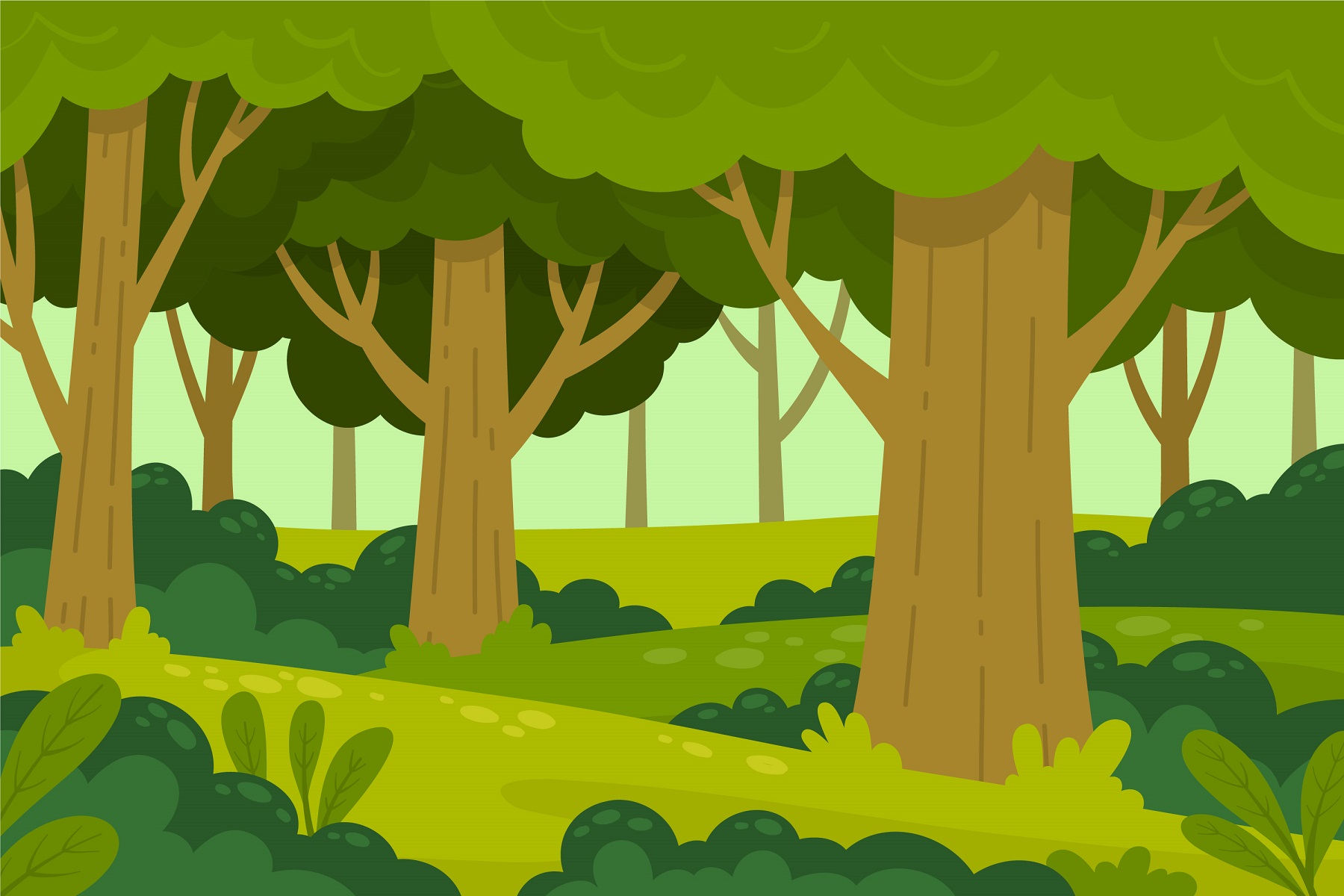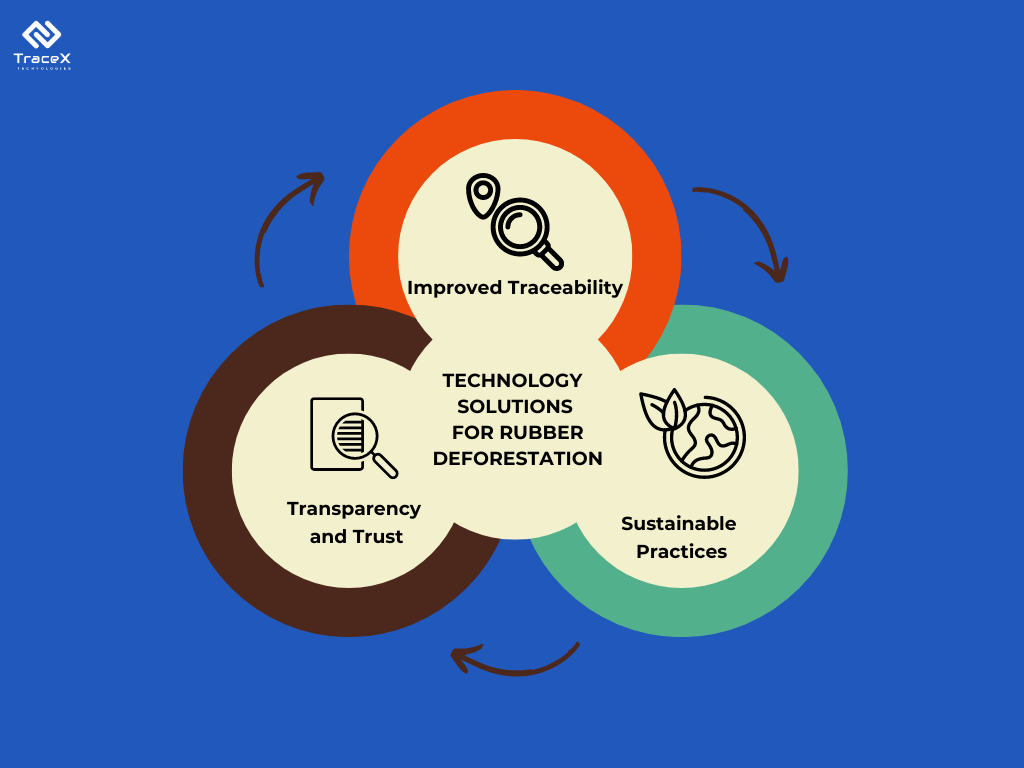Contact: +91 99725 24322 |
Menu
Menu
Quick summary: Explore the impact of rubber deforestation on global ecosystems and local communities. Learn about the environmental challenges, consequences for biodiversity, and actionable steps to promote sustainable rubber sourcing and mitigate deforestation effects.

Did you know that a seemingly ordinary object, like a rubber band ball you played with as a child, could be linked to the destruction of rainforests crucial for our planet’s health? Forests in tropical regions are being cleared at an alarming rate to make way for rubber plantations, contributing significantly to biodiversity loss and climate change. This growing rubber deforestation not only threatens critical ecosystems but also puts agribusinesses at risk of regulatory backlash and supply chain disruption.
According to Nature, with more than 4 million hectares of forest loss for rubber since 1993 (at least 2 million hectares since 2000) and more than 1 million hectares of rubber plantations established in Key Biodiversity Areas, the effects of rubber on biodiversity and ecosystem services in Southeast Asia could be extensive.
As the demand for natural rubber surges worldwide, the environmental toll is becoming harder to ignore For companies reliant on rubber, the challenge is clear: how do you meet market demands while ensuring that your operations don’t contribute to deforestation?
Key Takeaways
Rubber, a versatile and naturally occurring material, is an essential part of our daily lives. From the tires on our cars to the soles of our shoes and the gloves we wear, rubber products are ubiquitous. The global rubber industry is a multi-billion dollar economic engine, providing jobs and income for millions around the world.
However, the hidden cost of this economic boon is a devastating environmental consequence – rubber deforestation. Large swathes of rainforests, Earth’s lungs, are being cleared to make way for rubber plantations, leading to a silent crisis that threatens the very planet we depend on.
Currently, Southeast Asia produces 90% of the world’s rubber, while South and Central America, as well as more recent contributions from West and Central Africa, make up the remaining share.
This industry is closely linked to the issue of tropical deforestation, primarily fuelled by demand in international markets. Approximately 85% of natural rubber comes from smallholder farmers who manage plantations typically smaller than 5 hectares.
The environmental consequences of this land-use change are far-reaching and deeply concerning.
Rainforests are Earth’s most biodiverse ecosystems, teeming with an incredible variety of plant and animal life. However, rubber deforestation acts like a bulldozer, carving away at these vital habitats at an alarming rate. When rainforests are cleared for rubber plantations, countless species lose their homes. Trees that provide nesting sites for birds, monkeys, and other arboreal creatures are ripped down. Animals that rely on the dense undergrowth for shelter and food sources find themselves exposed and vulnerable. Habitat loss due to deforestation is a leading cause of species endangerment and extinction. Animals with specialized habitat requirements, like orangutans reliant on specific fruit trees, face dwindling populations as their homes vanish. Sadly, some species may disappear entirely before we even fully understand their ecological roles.
The loss of a single species in a rainforest ecosystem can have a cascading impact. Animals that disperse seeds or pollinate plants may disappear, disrupting plant reproduction and leading to further biodiversity decline. Forests also rely on intricate relationships between fungi and plant roots; deforestation can disrupt these relationships, harming plant health and potentially leading to widespread forest die-off.
Rainforests play a critical role in mitigating climate change by acting as giant carbon sinks. These lush ecosystems absorb massive amounts of carbon dioxide, a greenhouse gas, from the atmosphere and store it in the form of biomass (trees) and soil. Deforestation disrupts this vital carbon storage function. When trees are cut down and burned to clear land for rubber plantations, the stored carbon is released back into the atmosphere as carbon dioxide. This contributes significantly to global warming, accelerating climate change and its devastating consequences like extreme weather events. The removal of trees exposes the forest floor to the elements, leading to soil erosion. Healthy rainforest soils store significant amounts of carbon; erosion washes away this organic matter, further reducing the forest’s carbon storage capacity. Additionally, exposed soil is more susceptible to drying out and becoming less fertile, hindering the regeneration of healthy forests.
Rainforests are not just home to incredible biodiversity; they are also the ancestral lands of many indigenous communities. These communities have lived in harmony with the rainforest for generations, depending on it for food, shelter, medicine, and cultural practices. Deforestation disrupts the traditional ways of life for indigenous communities. Their hunting grounds are destroyed, sources of food and medicinal plants disappear, and traditional practices become impossible to maintain. This can lead to poverty, malnutrition, and a loss of cultural identity. Rainforests are often intertwined with the cultural heritage of indigenous communities. Specific trees or plants may be used in religious ceremonies, while stories and traditions are passed down through generations referencing the rainforest environment. Deforestation not only destroys these communities’ homes but also severs their connection to their cultural heritage.
The encroachment of rubber plantations on indigenous lands can lead to social conflicts. Disputes over land rights and access to resources can escalate into violence. Furthermore, indigenous communities may be forcibly displaced from their ancestral lands to make way for plantations, causing further hardship and loss.
The rubber industry’s journey towards sustainability is facing a major roadblock: a lack of transparency in its supply chains. A recent assessment by Spott, a ZSL initiative, revealed a worrying trend. This evaluation analysed how well companies involved in rubber production, processing, and trade disclosed their environmental, social, and governance (ESG) practices.
The results were concerning: 79% of natural rubber manufacturers assessed lacked the ability to publicly trace their rubber back to the processing level.
Only two companies, Michelin and Bridgestone, claimed some level of traceability back to the harvesting location at the time of the study.
This opaque supply chain raises serious red flags, particularly as the industry continues to expand rubber plantations into unidentified high-risk areas. Without transparency, the risk of deforestation intensifies, potentially leading to further destruction of vital ecosystems.
The environmental and social costs of rubber deforestation paint a grim picture. However, there is still hope for a future where rubber production and environmental responsibility can co-exist.
Certification programs like the Forest Stewardship Council (FSC) and Rainforest Alliance set standards for sustainable forest management and rubber production. These programs ensure practices that minimize deforestation, protect biodiversity, and uphold the rights of indigenous communities. By choosing certified sustainable rubber, consumers can support responsible production and create a market demand for change. By choosing certified products, you are sending a message to manufacturers that sustainable practices matter. While certification programs play a crucial role, they are not without limitations. Certification can be expensive for small-scale producers, and enforcement may not always be perfect. For a truly sustainable future, we need broader industry-wide changes and a shift towards responsible sourcing practices throughout the supply chain.
Research into alternative materials that could replace rubber in some applications is ongoing. For example, researchers are exploring the use of dandelion rubber, a natural latex alternative derived from dandelions, which requires less land and has a lower environmental impact. Innovation in sustainable rubber production is also crucial. Developing high-yield rubber clones or more efficient processing techniques can help reduce the amount of land needed for plantations.
Consumers hold significant power in driving change through their purchasing decisions. By actively seeking out and choosing sustainable rubber products, you are sending a strong message to manufacturers and retailers. Support organizations working towards sustainable rubber production and rainforest conservation.
A collective effort from consumers, manufacturers, governments, and NGOs is crucial to ensure a sustainable future for rubber production. By adopting responsible sourcing practices, supporting innovation, and making informed choices, we can break the link between rubber and deforestation, protecting our planet for generations to come.
The EU Regulation on Deforestation-Free Products (EUDR) aims to keep products linked to deforestation out of the European market.
The rubber industry is deeply affected by the EU Deforestation Regulation (EUDR), which mandates that products entering the EU must be verified as deforestation-free. Several industries relying on natural rubber are facing heightened scrutiny:
Automotive Industry: As one of the largest consumers of rubber for tires and components, automakers must now ensure that their rubber supply chains comply with EUDR standards to avoid disruptions in exports to the EU.
Footwear Industry: The shoe manufacturing sector heavily relies on rubber for soles, and non-compliance with EUDR could lead to blocked access to the European market, affecting global brands.
Healthcare Industry: Products like rubber gloves, tubes, and medical equipment are critical in healthcare, and non-compliance with EUDR regulations could disrupt supply chains. Manufacturers in the healthcare sector must adopt sustainable sourcing practices to ensure uninterrupted access to the European market. These industries now must trace the origin of their rubber to prevent deforestation-related risks, ensure compliance, and maintain their market access to the EU.
Complex Supply Chains: Tracing rubber from plantation to final product can be difficult due to numerous intermediaries. This makes it hard to verify if deforestation-free practices were followed throughout the chain.
Limited Visibility: Traditional methods lack real-time data on land use and deforestation activities within rubber plantations.
Geo-mapping and Satellite Monitoring: Satellite imagery can track land-use changes, helping to identify potential deforestation linked to rubber production.
Blockchain Technology: Creating a secure, digital record of a product’s journey (from latex extraction to processing) on a blockchain can ensure transparency and traceability. This allows authorities and consumers to verify if deforestation-free practices were followed.
Mobile Apps: Field workers can use mobile apps to record data on plantation practices and geo-locate rubber trees. This facilitates data collection and improves monitoring efforts.

Empowering Transparency in the Rubber Industry
TraceX’s EUDR compliance platform designed to specifically address the challenges faced by the rubber industry in complying with the EU Regulation on Deforestation-Free Products (EUDR).
The EU Deforestation Regulation (EUDR) presents a significant challenge for businesses entering the EU market, including producers of natural rubber from India. To navigate this landscape successfully, grasping the essential compliance obligations is vital.
In conclusion, while the rubber industry grapples with deforestation, technology offers a glimmer of hope. By implementing satellite monitoring, blockchain traceability systems, and mobile data collection apps, the industry can achieve greater transparency and pinpoint areas at risk. Furthermore, technological advancements can optimize yields, potentially reducing the need for further land conversion. Embracing these innovations alongside responsible sourcing practices and consumer awareness campaigns can create a path towards a sustainable future for rubber production. The choice is clear: we can leverage technology to break the link between rubber and deforestation, ensuring a healthy planet for generations to come.
Deforestation refers to the clearing of forests to establish rubber plantations. This practice is a global concern because it leads to significant environmental impacts, including habitat loss, biodiversity decline, and increased carbon emissions. The expansion of rubber plantations often encroaches on tropical rainforests, which are vital for maintaining ecological balance and supporting diverse wildlife.
Rubber deforestation impacts local communities by displacing indigenous populations and disrupting traditional livelihoods. The loss of forests also affects ecosystems by reducing biodiversity and altering water cycles. Forests play a crucial role in regulating climate, and their destruction can lead to increased flooding and soil erosion, further affecting both human and ecological systems.
To mitigate the effects of rubber deforestation, several steps can be taken:
Sustainable Sourcing: Adopt sustainable rubber sourcing practices that ensure rubber is produced without causing deforestation. Certification programs like the Forest Stewardship Council (FSC) can help guide these efforts.
Reforestation: Invest in reforestation and afforestation projects to restore damaged ecosystems and support biodiversity.
Technology Integration: Utilize technologies such as satellite monitoring and blockchain for traceability and transparency in rubber supply chains to ensure compliance with environmental regulations and sustainability standards.
